- Frugal drivetrain
- Excellent ride and handling
- Class-leading running costs
- Claustrophobic cabin
- Chassis needs more power
- Newer Toyotas have more equipment
Are you somebody who likes to be different? If so, according to manufacturers, a small SUV is the car you should buy. They’re all radically styled, full of attitude and supposedly better than their sedan and hatchback siblings and so far, these messages are getting through as they are literally everywhere. Small SUVs are meant to stand out from the pack, yet because of their popularity, do any of them actually stand out? We tested the 2020 Toyota C-HR Hybrid to find out.
Price & Specs: 7/10
The C-HR range starts from $30,915 plus on-road costs for the entry GXL, though you’ll need to fork out $37,665 for the top-spec Koba Hybrid that we tested. It’s not cheap but standard kit on all C-HRs is strong – unlike most rivals, even the base model gets a full suite of active safety tech that includes auto emergency braking (AEB) with pedestrian and cyclist detection, turning AEB, adaptive cruise control, blind-spot monitoring, rear cross-traffic alert, speed sign recognition, lane departure warning with lane keep assist and auto high beam.
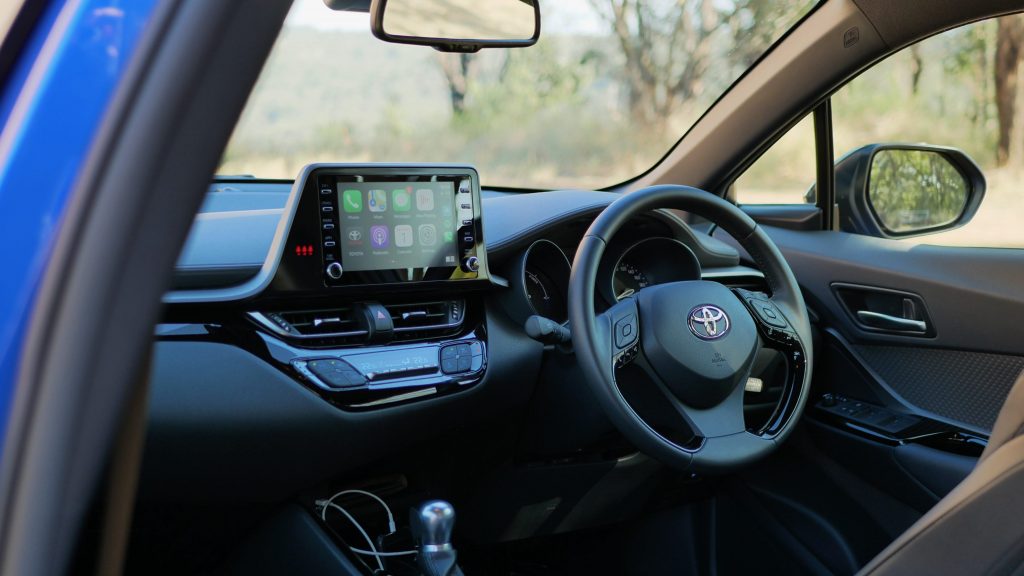
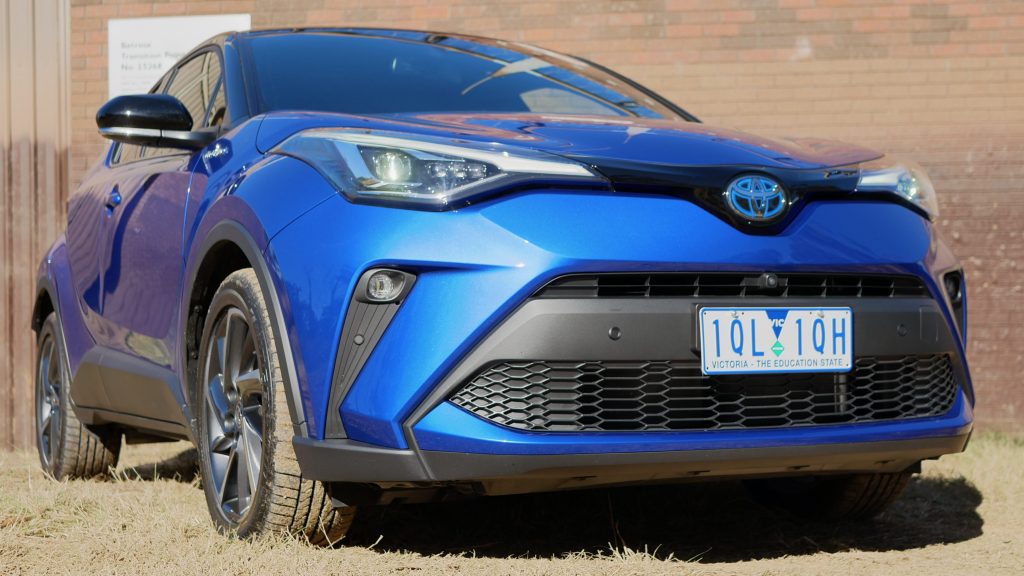
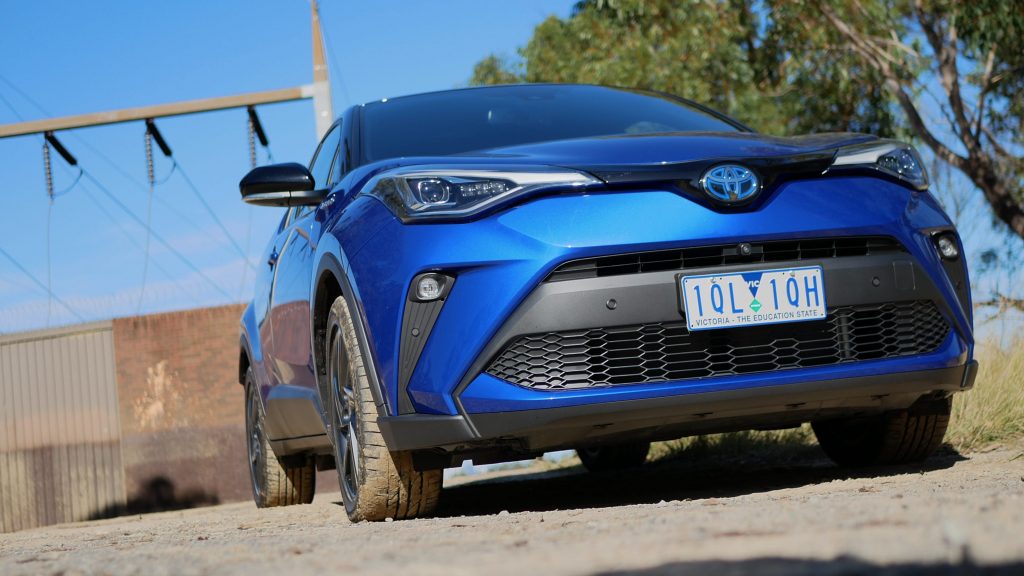
Other kit includes LED lighting, dual-zone climate control, keyless entry and start, heated/auto-folding mirrors, an 8.0-inch touchscreen with Apple CarPlay and Android Auto, digital radio, a reversing camera, inbuilt satellite navigation with live traffic reports, auto lights and wipers and so on.
The top-spec C-HR Koba – not to be confused with the Hyundai Kona – adds 18-inch alloy wheels, LED taillights with scrolling indicators, leather upholstery, heated front seats with electric driver’s lumbar adjustment, reverse auto braking, a 360-degree parking camera, rear privacy glass, ambient lighting and Toyota’s ‘Nano-e’ air filtration system.
Metallic paint – ‘Crystal Pearl’, ‘Shadow Platinum’, ‘Graphite’, ‘Ink’, ‘Inferno Orange’, ‘Nebula Blue’, ‘Feverish Red’ and ‘Oxide Bronze’ – is $515, while Koba buyers can also select a contrast-coloured roof on most colours for a further $465.
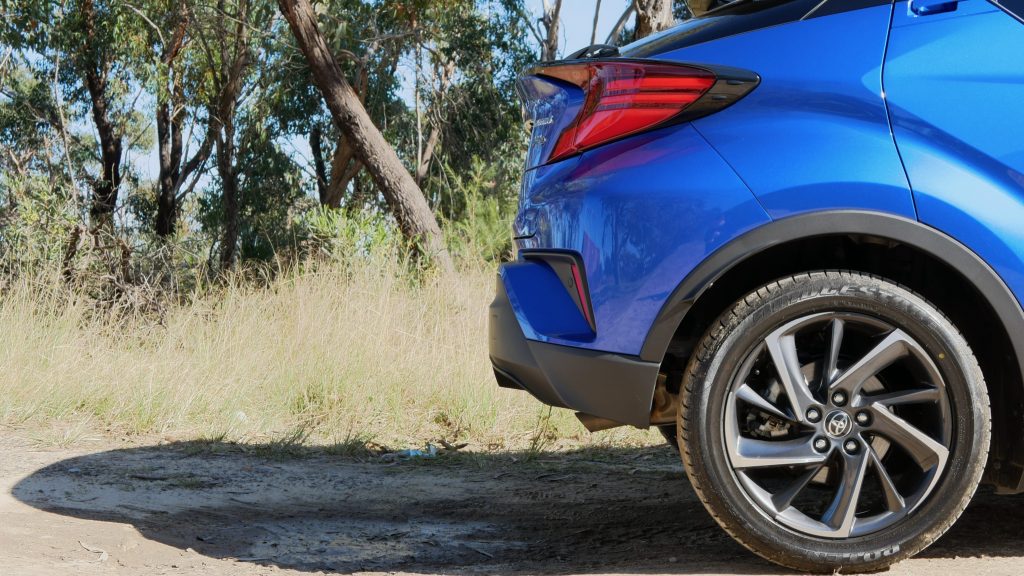
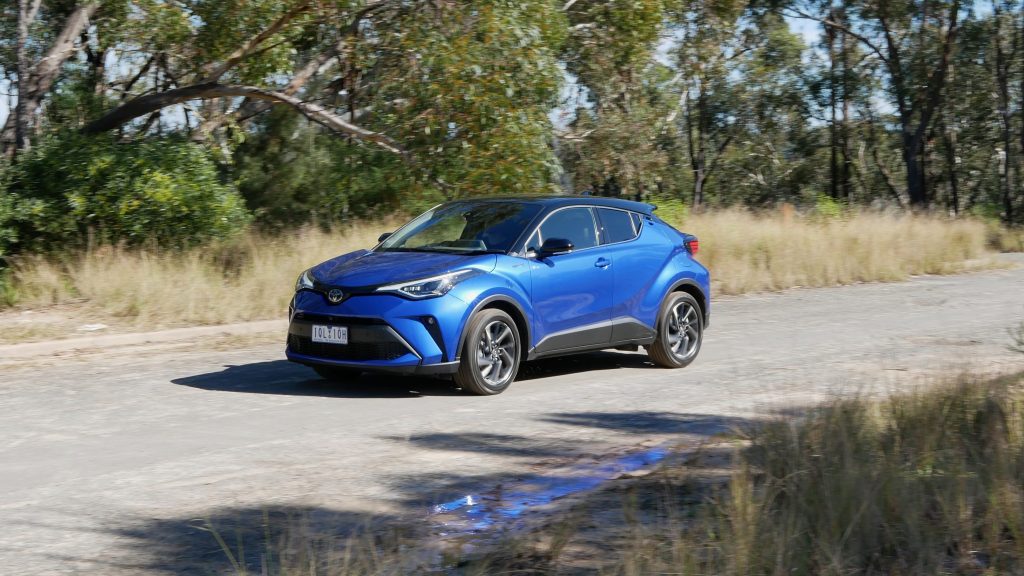
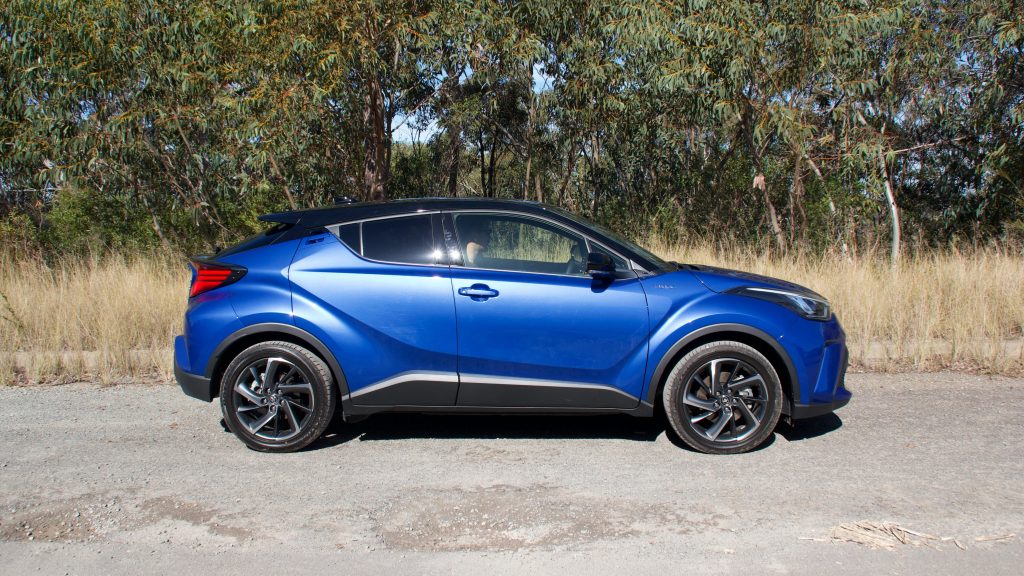
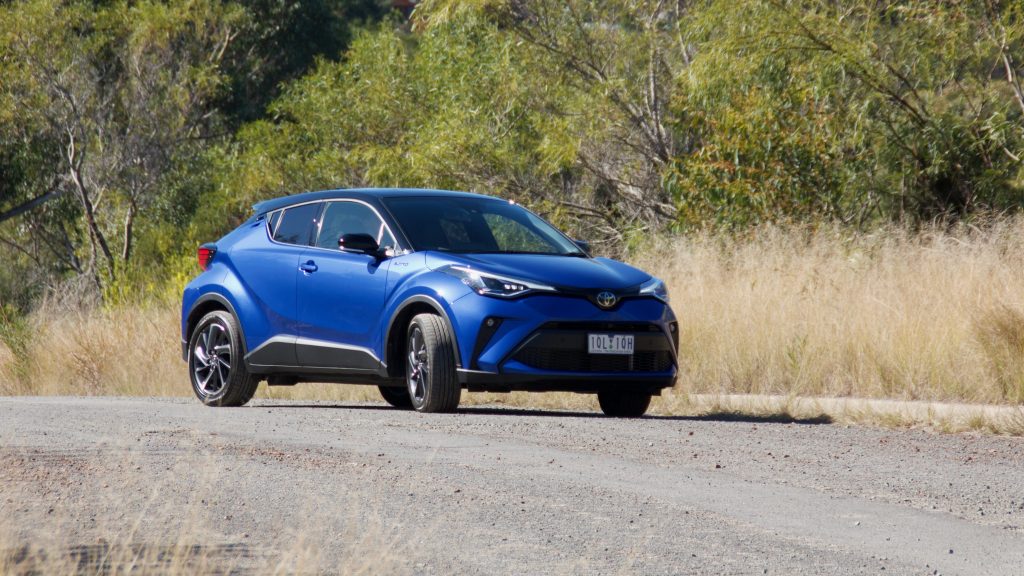
There’s several rivals that the C-HR competes with: the aforementioned Kona, Kia Seltos, Mazda CX-30, Nissan Qashqai, Renault Kadjar, Mitsubishi ASX and so on. We consider the CX-30 and Seltos to be the C-HR’s biggest rivals in terms of size and equipment, though neither offer a hybrid option.
Rivals can offer more equipment though – a Kia Seltos GT-Line, for example, features an electric driver’s seat, cooled front seats, wireless phone charging, multiple USB ports, rear air vents, a Bose sound system, a sunroof and a colour heads-up display – kit that the C-HR should feature as standard.
Engine & Drive: 8/10
Until now, all Australian C-HR models were powered by a 1.2-litre turbo petrol engine and the hybrid drivetrain is a new addition to the range. Combining a 72kW/142Nm 1.8-litre petrol engine and an electric motor that gets its power from a nickel-hydrate battery pack, Toyota claims peak power as 90kW – 5kW more than the 1.2-litre turbo. Like the petrol version, the hybrid uses a CVT automatic transmission but unlike other C-HRs, the hybrid is purely front-wheel drive.
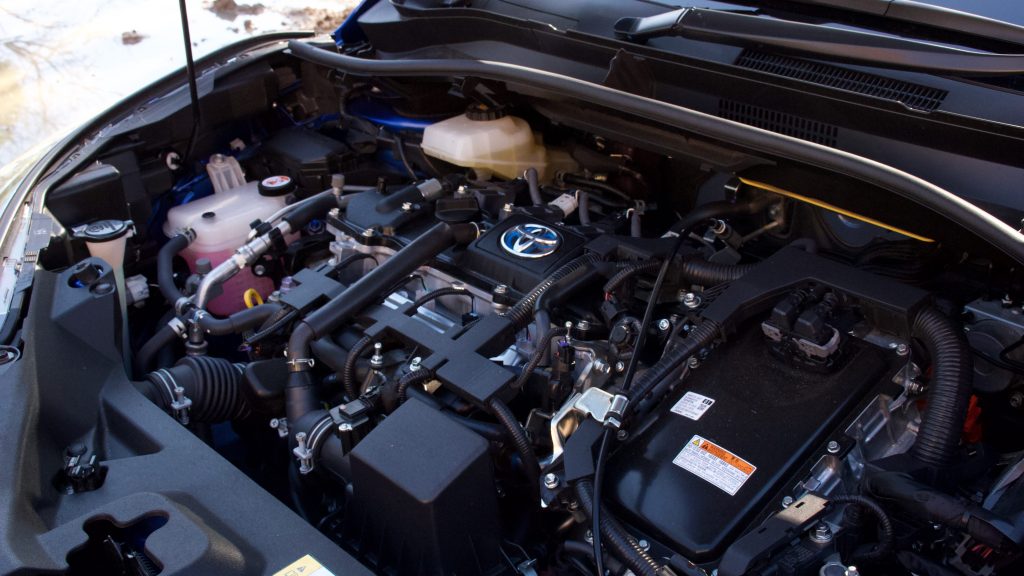
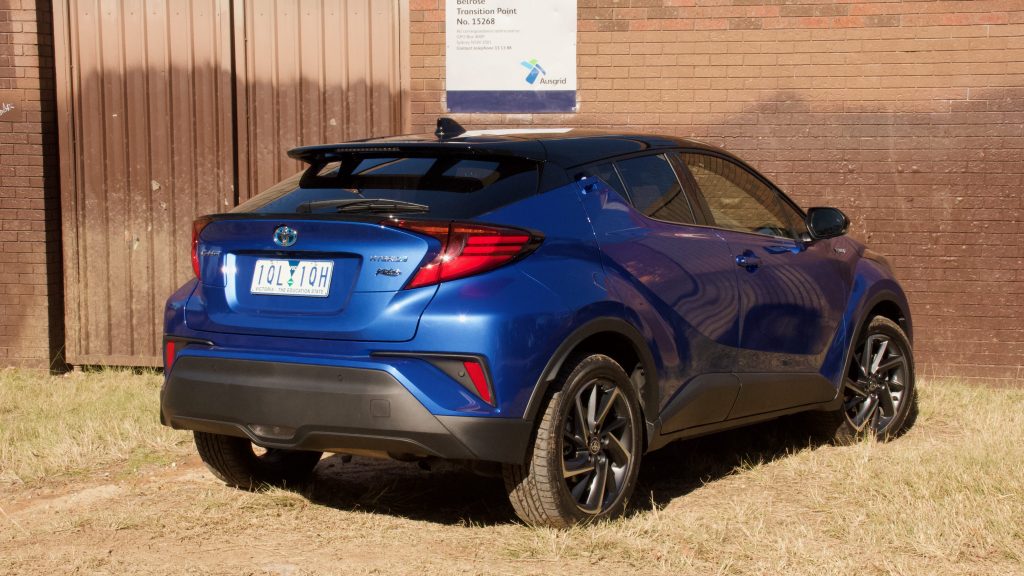
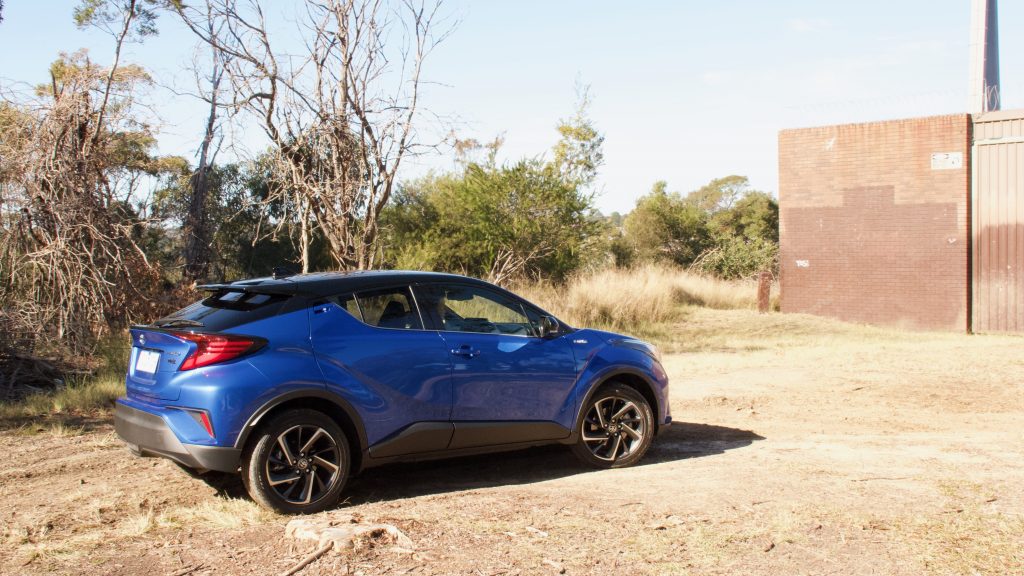
Thanks to the CVT auto, the 2020 Toyota C-HR hybrid is not the most refined car to drive. Punch the throttle and a lot of strained engine noise floods the cabin. If you regularly do highway miles or live in the country, the C-HR hybrid is not the best choice for you as hybrids do their best in urban conditions where there’s enough braking for the battery to draw energy from.
Around town, the 2020 Toyota C-HR hybrid is a largely quiet driving experience. The engine is only used when accelerating – in all other situations such as braking and coasting, it switches off, which aides fuel economy and refinement. The C-HR hybrid can set off on electric power alone, though only on a level incline or heading downhill with moderate throttle. Helping you drive more economically are the C-HR’s driver’s dials which feature a gauge to show when energy is being saved, when you’re driving economically and when you need more power – it would be nice to see a tachometer from the Corolla hybrid, however.
“The engine is only used when accelerating – in all other situations such as braking and coasting, it switches off…”
As its peak power figure might suggest, the C-HR isn’t fast. Its claimed 0-100km/h sprint time is a leisurely 11 seconds, which is a shame as the excellent chassis deserves a lot more power. In Europe, a 137kW 2.0-litre hybrid is also available which reduces the 100km/h sprint time to just 8.2 seconds and would no doubt give the C-HR more of the performance it deserves.
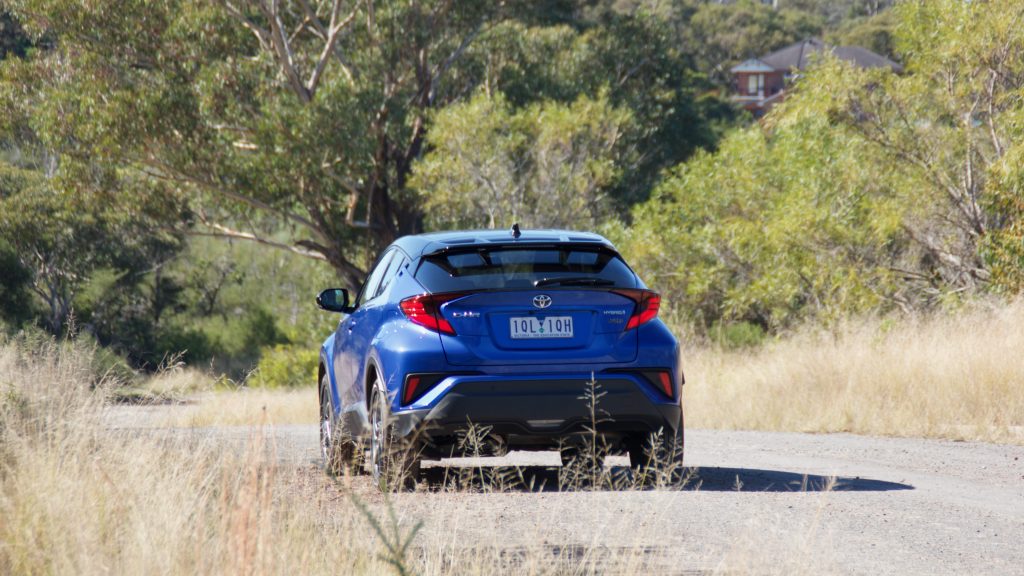
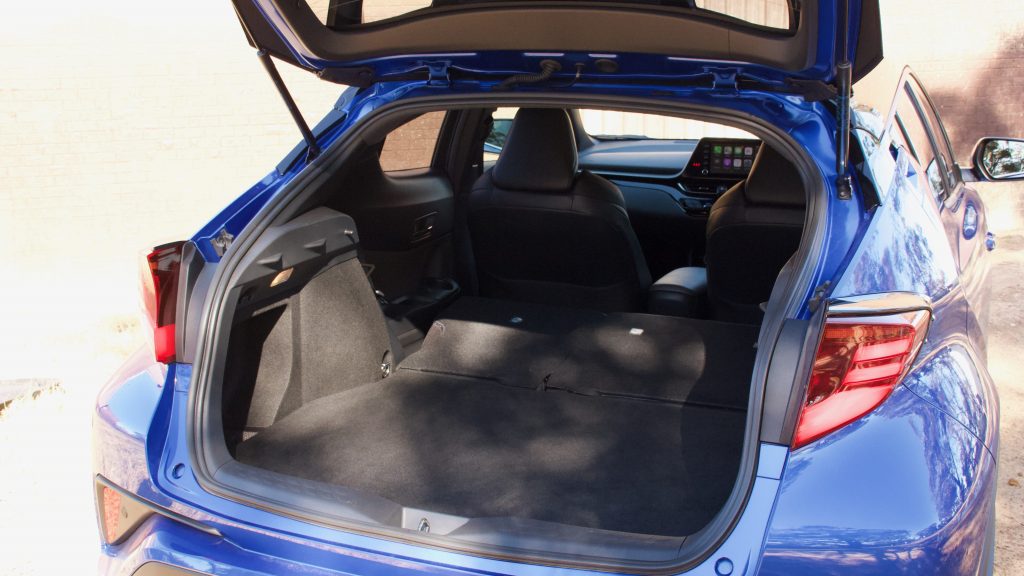
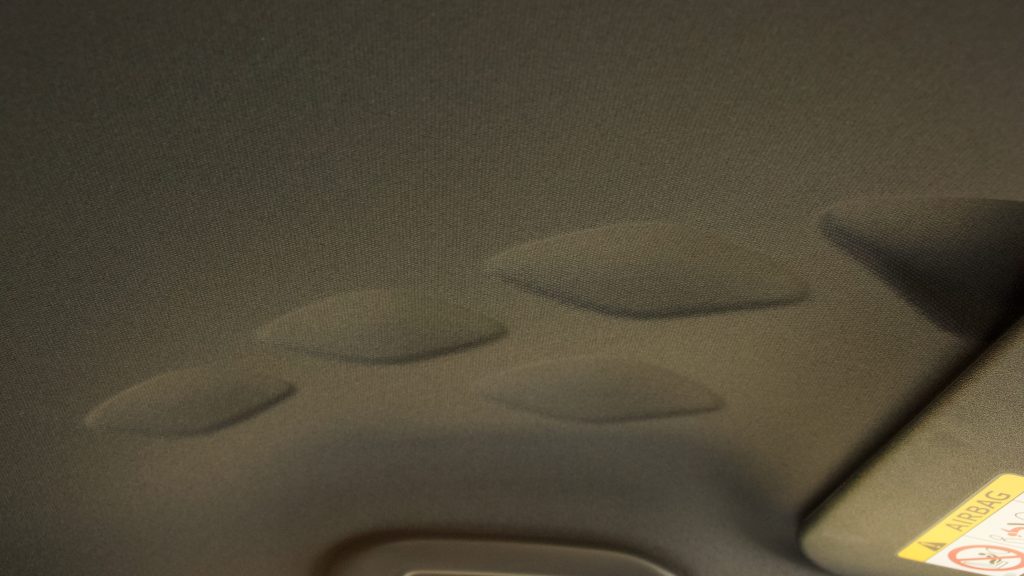
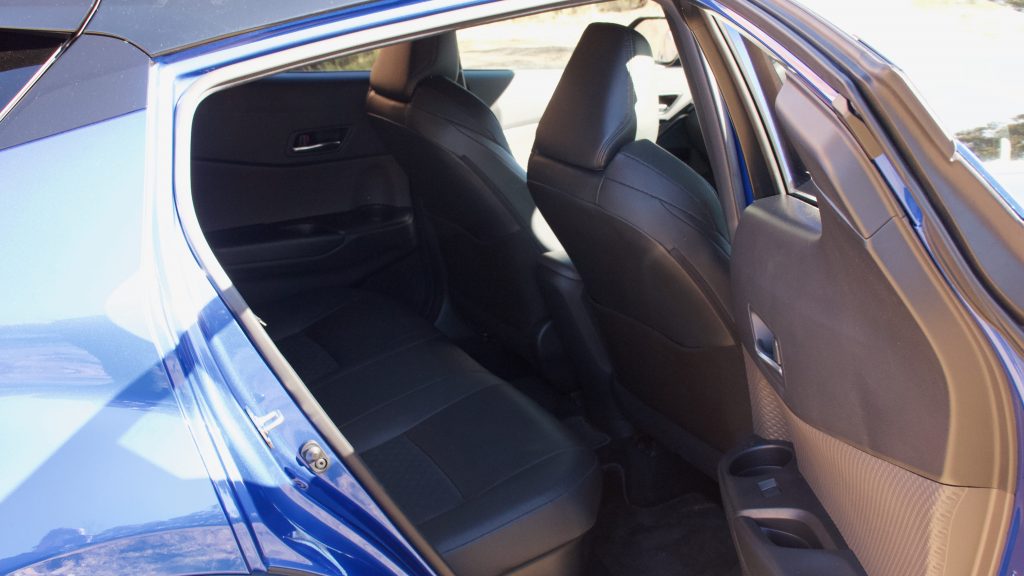
Of course, the flip side to that coin is great fuel economy. Toyota claims a combined 4.3L/100km rating and we averaged a pretty excellent 5.2L/100km – the Hyundai Kona 2.0-litre petrol in our experience averaged almost double in similar testing. Even in purely urban conditions, a range of more than 800km is achievable without even trying.
Ride & Handling: 9/10
The C-HR was one of the first new generation Toyota products to be based on the company’s TNGA platform, which it shares with the Prius, Corolla, Camry, RAV4, etc. The C-HR was the first small SUV that displayed properly mature dynamics – not only does it handle well but the ride is also excellent. It shrinks around you as you drive, it’s quite nimble and it’s just a fun car to drive.
“The C-HR was the first small SUV that displayed properly mature dynamics – not only does it handle well but the ride is also excellent.”
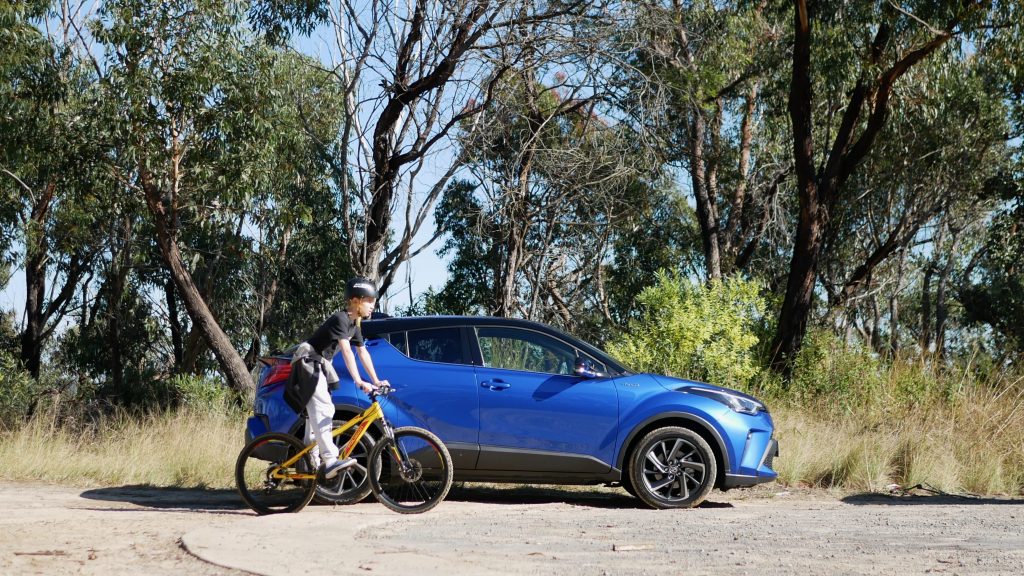
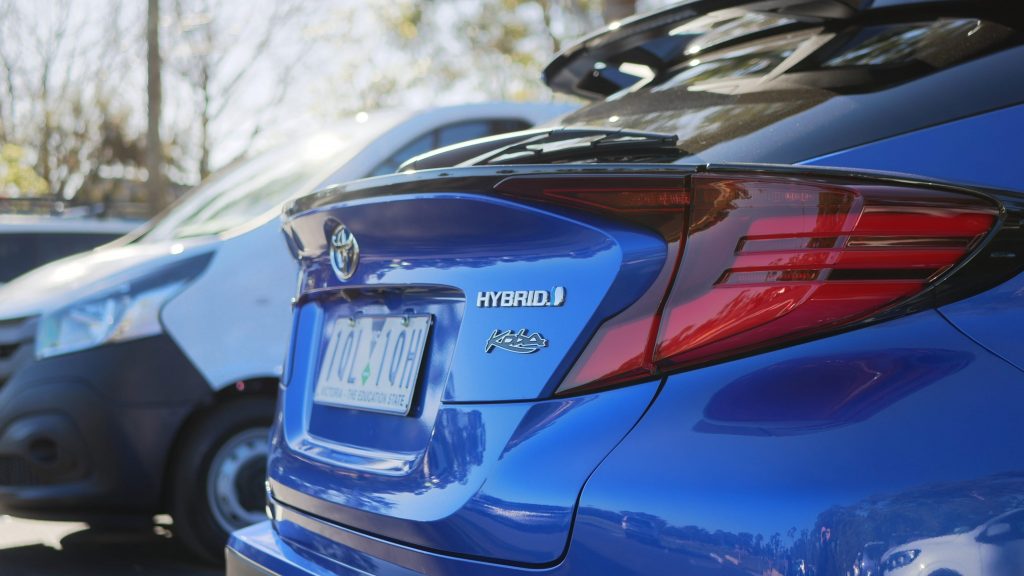
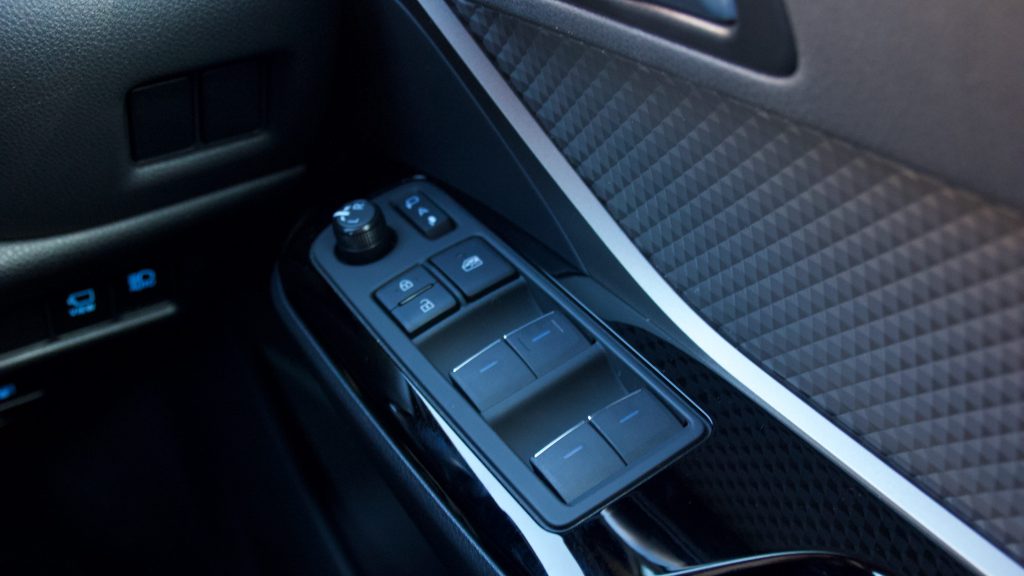
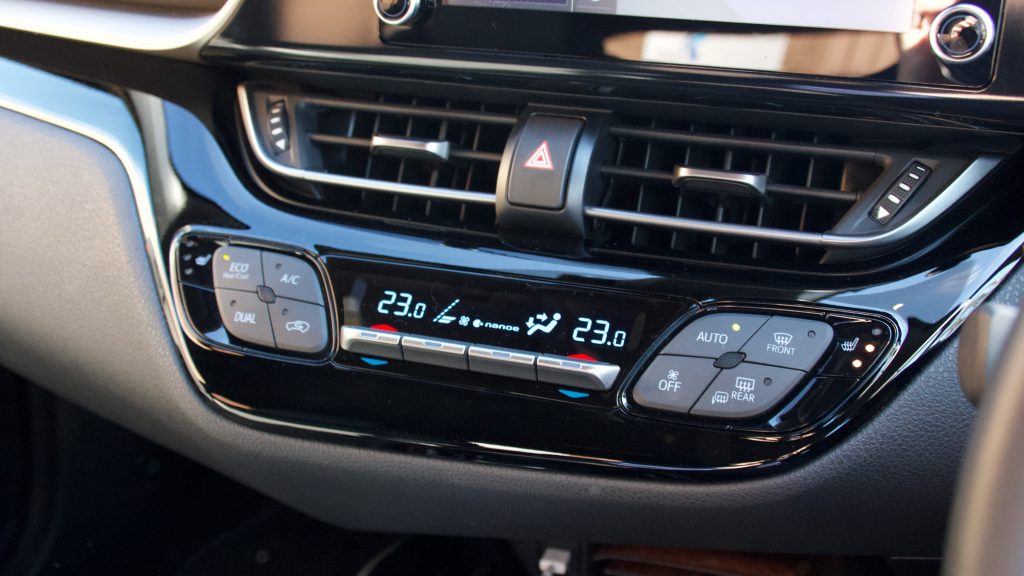
Even on the larger 18-inch wheels of the Koba variant, the C-HR’s ride is rarely phased – it merely just gets on with the job of being comfortable for occupants. On harsh Sydney streets, the C-HR is a mostly serenely-riding car – large bumps can be felt, but the suspension settles quickly. The C-HR’s handling is good too with high limits, which means it can be pushed however hard you’d like.
Interior & Practicality: 7/10
The interior of the 2020 Toyota C-HR was a big step forward for Toyota in terms of both design and quality, and three years on, things are still pretty good. Soft touch plastics adorn the C-HR’s dashboard and front doors, and unlike a lot of competitors’ interiors, the materials and design are interesting to look at. There’s an ovular theme inside that’s replicated in the door trims, climate control and steering wheel buttons and even on the headlining. Even this alone is a level of attention to detail not seen previously from the brand.
“…unlike a lot of competitors’ interiors, the materials and design are interesting to look at.”
With the mid-life update for the C-HR, Toyota introduced a new 8.0-inch touchscreen with Apple CarPlay and Android Auto smartphone mirroring that’s shared with the Corolla, Camry, etc. The new system is a huge improvement over the previous unit as it’s much quicker, nicer to look at and finally has smartphone mirroring tech to bring it into 2020. The screen also finally runs on the same brightness settings as the driver’s dials as well – something that also migrated from the newer Corolla, though it would be nice to see some of the newer switchgear such as the stalks that limit the headlights to auto, parking lights and low beam.
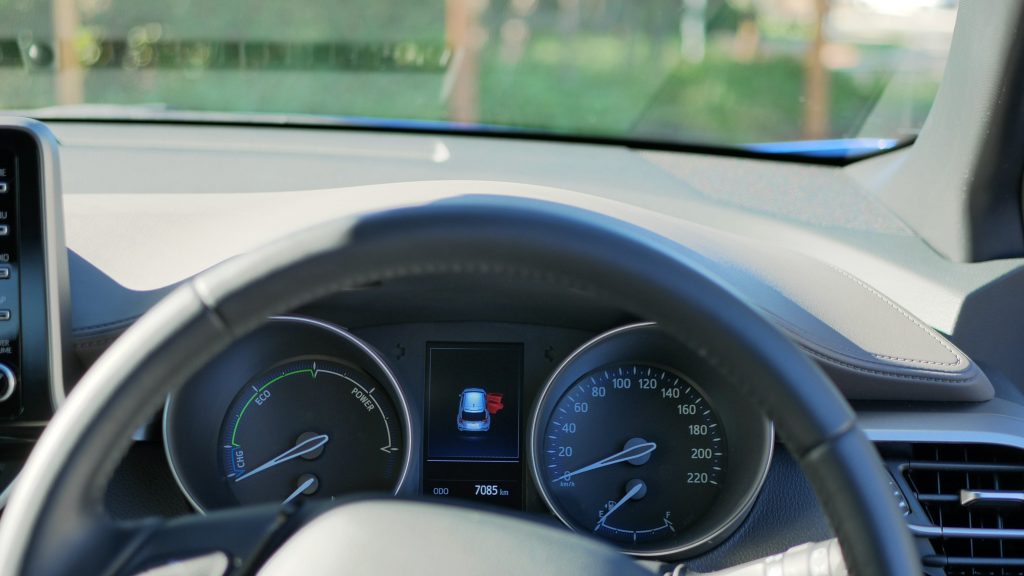
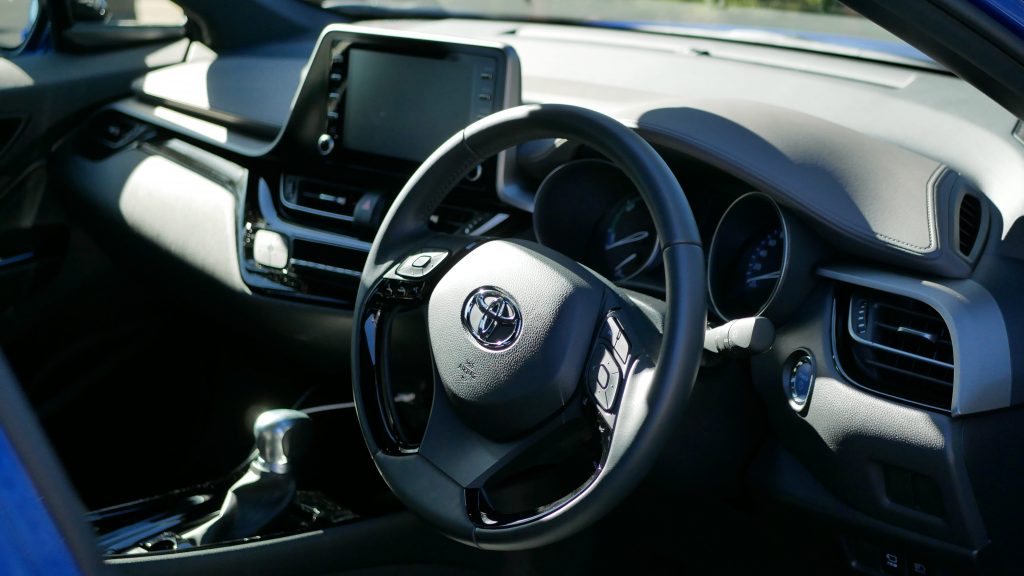
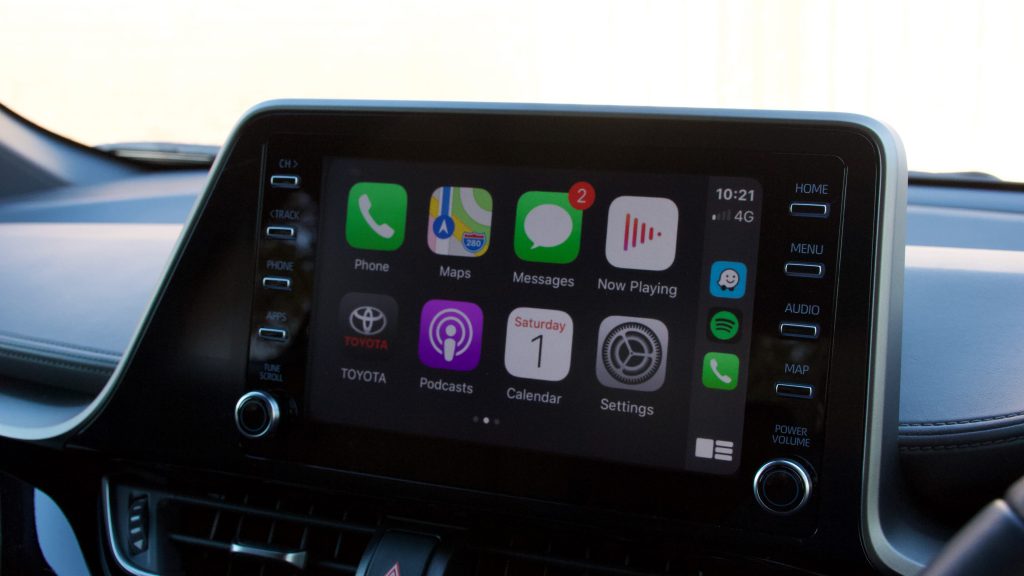
That said, it’s not the most practical space. The windows are small as well, which makes the cabin feel claustrophobic, especially in the rear seat. Cabin storage is not amazing – the cupholders are small, as are the centre bin and door bins. Taller occupants might find the headroom a bit tight too in both rows, though other space is more than adequate. The rear seat is not the most well featured – there’s no armrest, no air vents, no charging port though there are two map pockets and a drink holder (but no pocket) in each door.
The C-HR’s boot is not the best in the segment, but nor is it the worst either. There’s quite a high lip to lift luggage into, but the space is otherwise healthy at 377-litres. It would be nice to see some more user friendly features such as hooks and nets, though the seats do fold completely flat. The Kia Seltos is definitely more practical, but the Toyota’s attention to detail and quality is definitely superior.
Warranty & Servicing: 10/10
Like the Camry, Corolla and RAV4, the C-HR exhibits class-leading running costs. In addition to a five year/unlimited km warranty, the C-HR’s servicing is the cheapest on the market at just $185 per 15,000km/annual service – though no roadside assistance is a bit mean.
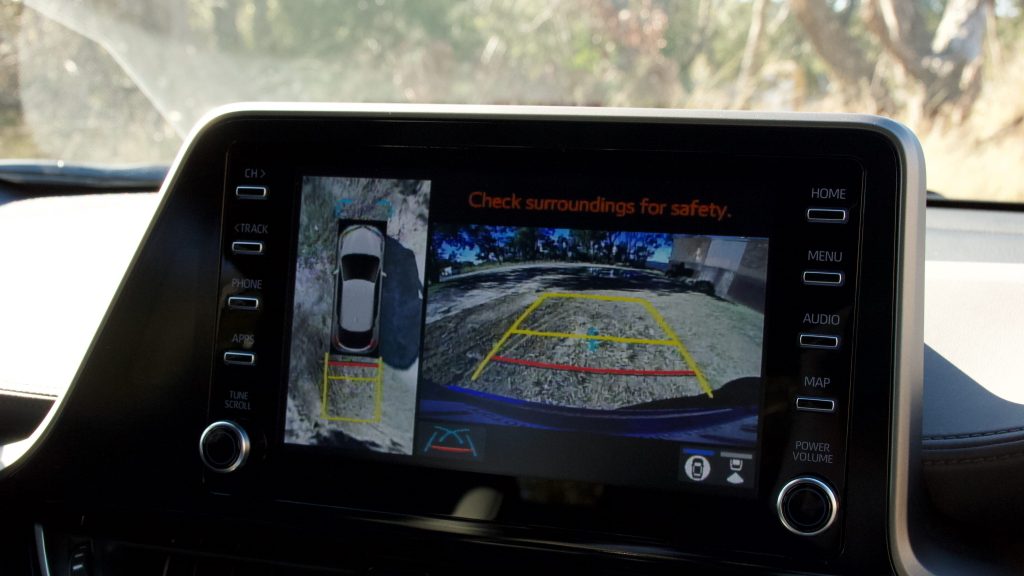
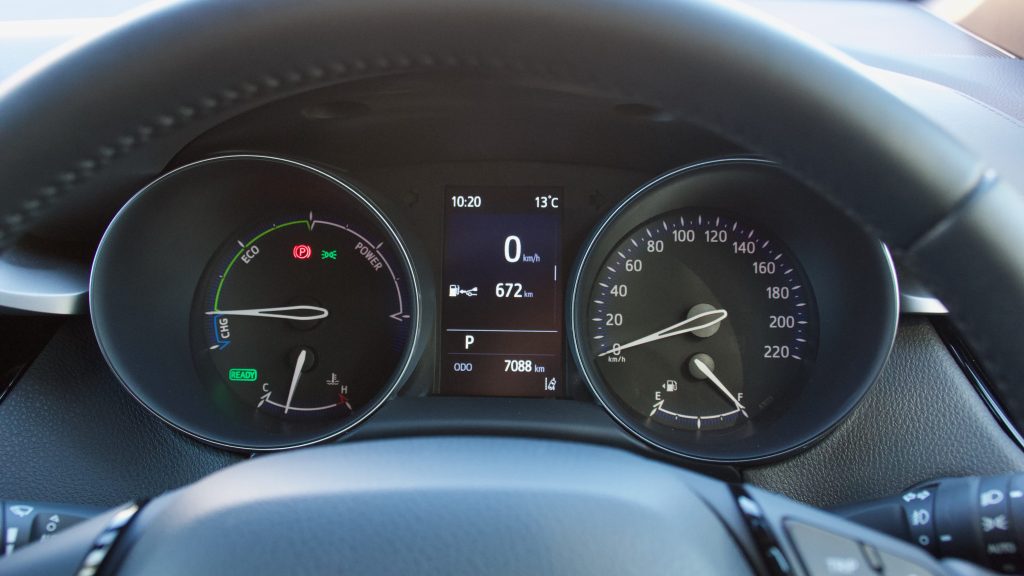
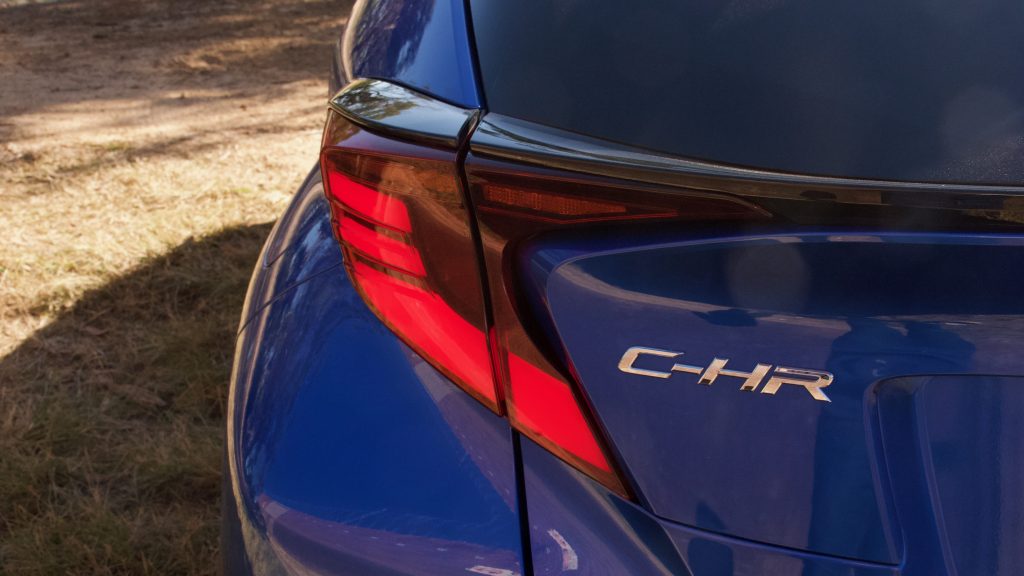
Over five years, that’s just $925 – a Kia Seltos 2.0-litre costs $1,037 just for three years of servicing.
2020 Toyota C-HR Koba Hybrid DiscoverAuto Rating: 8/10
The 2020 Toyota C-HR Hybrid really does stand out from the small SUV crowd. Thanks to its interesting design, great interior quality, excellent driving dynamics and frugal hybrid drivetrain, the C-HR Hybrid is a standout product. Sure, it’s not the most practical offering and nor is it the cheapest, but it’s a great addition to both the Toyota range and the small SUV segment. Is the hybrid the one to go for? Undoubtedly as it offers fuel economy that no other competitor gets even close to – and wrapping it up in a package that’s as classy as the C-HR makes it even better.
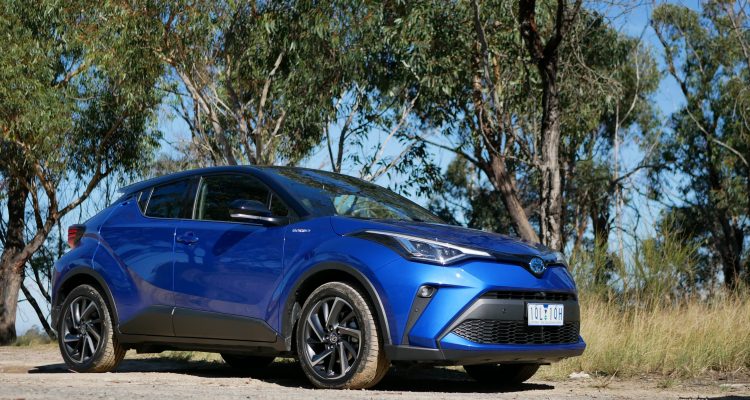
Leave a Reply